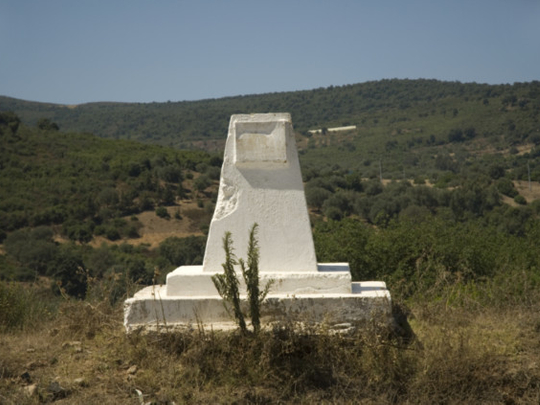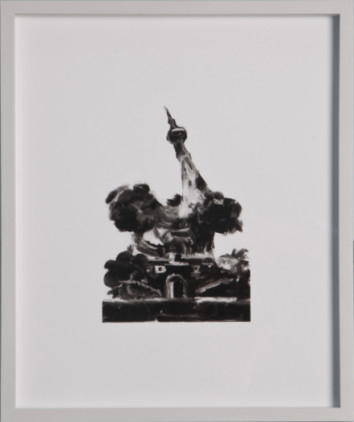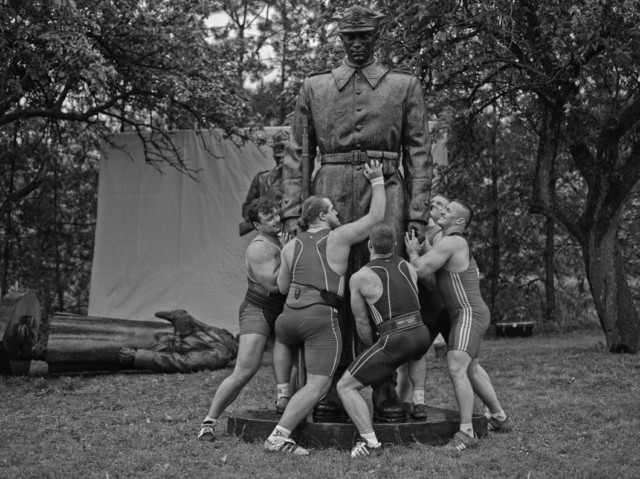
Monuments are generally about collective commemoration of political or cultural history. But can monuments go beyond representing the past and evoking collective memory? Can they also embody forgetting or fragmentation of history? Is there another way to look at monumentality and the complex dynamics of commemoration, space and power? These are the questions curator İpek Ulusoy Akgül is asking in a group show titled, “Proposals on Monumentality”. The show, featuring artists from different countries, invites viewers to look at monumentality from new perspectives.
“I am interested in exploring issues of material culture and the power dynamics between architecture and monuments. With iconic buildings and large scale museum projects that are perceived as monuments being built in this region, and the changing urban and political environment here, it is quite relevant to look at the complex relationship between monumentality, memory, and spatial and political dynamics. Through the different geographies and histories traced by the individual artists, this show offers alternative perceptions of monuments and explores issues of memory and forgetting, erecting and erasing and the histories and futures represented by monuments. These proposals do not provide answers. They are meant to stimulate viewers to think about the subject and ask new questions,” Akgül says.
Berlin-based artist, Christian Jankowski addresses these issues by playfully juxtaposing the physical weight of a monument with the weight of its history, in his video, “Heavy Weight History”. The artist invited a group of champion weightlifters to try to lift various monumental public sculptures in Warsaw, which included communist era monuments and a statue of Ronald Reagan. His 26-minute video and photographs document this unique “sports-artistic-historical” event, where the weightlifters “challenged” history with varying degrees of success.
The narrator in the video is a well-known sports commentator, who uses phrases such as “you have created history”; “this is a contest between the past and present”; and “at least a fragment of history has been removed today”. The enthusiasm and encouragement of the commentator, the sincere efforts of the weightlifters to literally lift the weight of history, the excitement of the young women who turn up to applaud them, and the silent, unmoving, monumental sculptures combine to create an interesting and layered narrative about the role of people in crucial moments of history; the spatial politics of public space and commemoration; what history means to ordinary people; and issues of national self-image, communism and masculinity.
Turkish Artist Asli Çavuşoğlu takes this dialogue further by focusing on a monument that no longer exists. The monument was a war memorial built in 1914 in Istanbul to commemorate Russian martyrs, and demolished a few years later by the victorious Ottomans. The demolition was filmed by an Ottoman army officer, but that film, which is considered to be the first Turkish film ever made, has also been lost. Çavuşoğlu’s mixed media works, titled “The Demolition of the Russian Monument at Ayastefanos” take inspiration from two found images — before and after the demolition to reconstruct the event and retell this forgotten history. The work investigates rupture and continuity in history and the power dynamics involved in the remembering and forgetting of triumphs and failures in history.
The play between remembering and forgetting history is also seen in Algerian artist Amina Menia’s photographic series “Chrysanthemums”. The artist travelled along the Northern coast of Algeria photographing vandalised, forgotten and neglected commemorative stellae and monuments dedicated to martyrs who fought for Algerian independence. The structures are not monumental in size, and the artist emphasises this by presenting her small photographs in much larger frames. The images and accompanying text reflect on post-colonial history and politics and investigate the highly charged narratives and associations attached to these forgotten structures. “These structures have lost their meaning, function and aesthetic appeal. The ravages of time and the neglect or wilful destruction of these monuments show a history written by erasure, making them symbols of forgetting rather than remembering,” Akgül says.
Egyptian-American artist Iman Issa goes a step further in her “Material” series by stripping familiar monuments of their history and commemorative function and reconstructing them to suit contemporary realities. Her work in this show is a proposal for an alternative structure for a familiar monument in Cairo, whose name and location she does not reveal. The artist also comments on the limited, simplistic language of monuments by giving her work the suggestive title “Material” which she says is “for a sculpture commemorating a singer whose singing became a source of unity of disparate and often opposing forces.”
While Issa’s proposal comprises text, image and a wooden sculpture, German artist Santiago Sierra’s “Conceptual Monument” is simply a typewritten proposal on paper. The proposal was submitted for a design competition for the Liepzig Freedom and Unity Memorial, but was rejected. It is worth reading because it offers an interesting blueprint for public monuments of the future by proposing an immaterial monument, and suggesting that the public square earmarked for it will belong to the people of Leipzig, who will democratically decide how the community should use the space and the 6 million euro budget allocated for it. Through this provocative proposal for a monument that does not physically exist, Sierra draws attention to the way power structures operate in our daily lives and the role of monuments in representing and enforcing power, asking viewers to consider what it means to be in complete control of a public space.
Similarly, the monuments in India based Pakistani artist Seher Shah’s “Mammoth: Aerial Landscape proposals” do not physically exist. They are implied by her interventions in aerial photographs of landscapes taken by her photographer husband. By digitally erasing or adding monument-like forms in the photographs, Shah subtly alludes to the simultaneous process of forgetting old spaces of memory and creating new ones.
Jyoti Kalsi is an arts enthusiast based in Dubai
The show will run at Green Art Gallery until January 4











